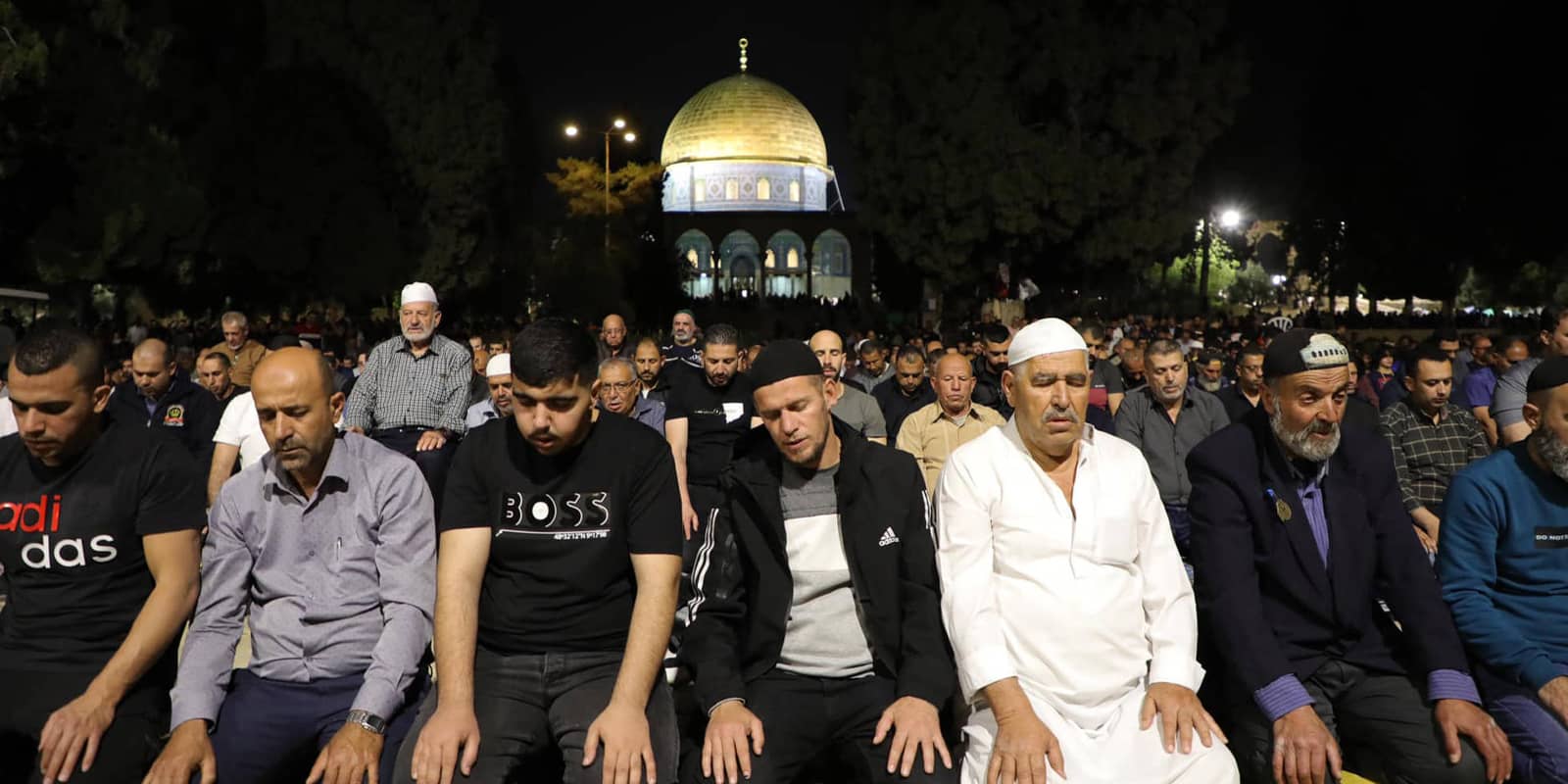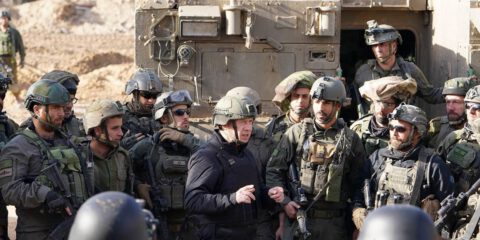Security fears of the last 10 days of Ramadan are hardly justified. Ramadan has hardly been the most violent month in the past, and the last 10 days are not necessarily the most violent of the month. Conceding to this fear out of tactical considerations of an overburdened Israeli police does not justify the strategic costs that impinge on Israeli sovereignty over the Temple Mount and its capital.
The security cabinet announced that Jews would not be allowed on the Temple Mount over the final 10 days of Ramadan, a practice that began in 2013 under the Netanyahu government, continued during the Bennett government, and was renewed once more by the Netanyahu government, presumably “the most right-wing government” Israel ever had. Hamas quickly attributed the decision to the Arabs in Jerusalem – who stood vigil protecting al-Aqsa mosque – and the three-pronged missile attacks from Lebanon, Syria, and Gaza.
The question is whether the decision is justified. We should note that the month of Ramadan, which because of the lunar basis of the Muslim calendar, travels over time across the whole sun-calendar year, has hardly been the most violent.
Almost none of the most tumultuous periods of Palestinian violence occurred during the month of Ramadan: the first Palestinian intifada broke out in December 1987, not in Ramadan in April of that year; the war waged by the Palestinian Authority against Israel – the most cataclysmic event to date – broke out at the end of September 2000, preceding the month of Ramadan by nearly two months; the first of the three major wars between Hamas-dominated Gaza and Israel in December 2008 took place three months after Ramadan that year; and an even more significant discrepancy can be observed in the second war in 2012 when Ramadan occurred in July, and the round of violence took place in November. The final major conflict, in May 2021, began the last two days of Ramadan. Ramadan in April 2022 was characterized by a significant decline in violence that took place beginning in March, which resulted in 12 Israelis being killed. The same seems to prevail in this year’s month of Ramadan. Twenty-five days into the month, the number of fatalities (four) was higher than in March (one fatality) but lower than in January and February, during which 14 were killed. The number of wounded was more evenly spread: 10 occurred during January, 12 during February, eight during March, and nine during Ramadan.
Only the 2014 round of Hamas violence, albeit the longest and bloodiest, was launched on the 20th day of Ramadan. However, neither Israeli nor Palestinian commentaries cited Ramadan as connected to the outbreak of violence.
If there is little correlation between peaks of violence and Ramadan, this also means that one can hardly expect the last 10 days of Ramadan to be necessarily the most violent days of the year.
Nevertheless, one may ask and answer the question of whether the last 10 days of Ramadan in any given year has been, on average, more violent than the 20 days or so preceding it.
Let us look at the last three years (prior to this one), when the proposition has been elevated to an undisputed fact, thanks in part to Hamas propaganda, its warm embrace by the Israeli security establishment, and the many Israeli media outlets that uncritically adopt it, in part for political reasons (to curtail the Jewish presence on the Temple Mount), or out of self-interest that fears generally generate better media ratings than political calm.
The answer is mixed, suggesting some tendency that the proposition is correct.
Ramadan in 2020 began on April 24 and continued until May 22. In terms of violence, it was a calm year compared with the two following years, with three Israelis killed and 46 wounded. The peak months of violence were in January and February. One of the three murders took place on the first of the last 10 days of Ramadan, being one of the three severe incidents out of five that took place the entire month of Ramadan, suggesting that the last 10 days were slightly more violent than the rest.
The proposition seemingly gains even more credence the following year, when in the last 10 days of Ramadan, 15 serious incidents involving serious injury or death took place, compared with two such incidents in the preceding 20 days or so of Ramadan. That was the prelude to Hamas violence and widespread violence among Israel’s Arab citizens.
However, the same pattern did not hold during Ramadan in April 2022. Four Israelis were killed during that month (compared with 12 the previous month), of which only one was killed in the last 10 days of Ramadan. Out of the 12 stabbing and shooting incidents, only two occurred over the last 10 days of Ramadan. And in the six days of the last 10 this year, no serious security event was registered.
Given that Ramadan is hardly the most violent of months and that the last days of Ramadan are not necessarily the most violent period of Ramadan, this hardly justifies the warm embrace by the security establishment of the linkage between Ramadan and violence that is critical to Iranian, Hamas, Islamic Jihad and Fatah ideology.
Instead of feeding fears and caving in to the threat of Palestinian violence, Israel, as the stronger side, should be the one threatening grave consequences to those acting violently any time of the year.
The ritualization of a fear implanted by the enemy when neither the facts on the ground nor the strategic and tactical superiority of Israel over its enemies justifies it is a grave mistake. It leads to concessions over sovereignty on the Temple Mount, compromises Israeli sovereignty over its capital, and inculcates fears among Israelis to visit its capital and the holy sites of Jews. These ramifications far outweigh the security considerations relating to an overworked security force.
There are sufficient resources within the security establishment to be recruited to hold firm in the last 10 days of Ramadan, to enable a peaceful period for Israeli visits to the Temple Mount in the future.
JISS Policy Papers are published through the generosity of the Greg Rosshandler Family.
Photo: IMAGO / APAimages









 - בניית אתרים
- בניית אתרים